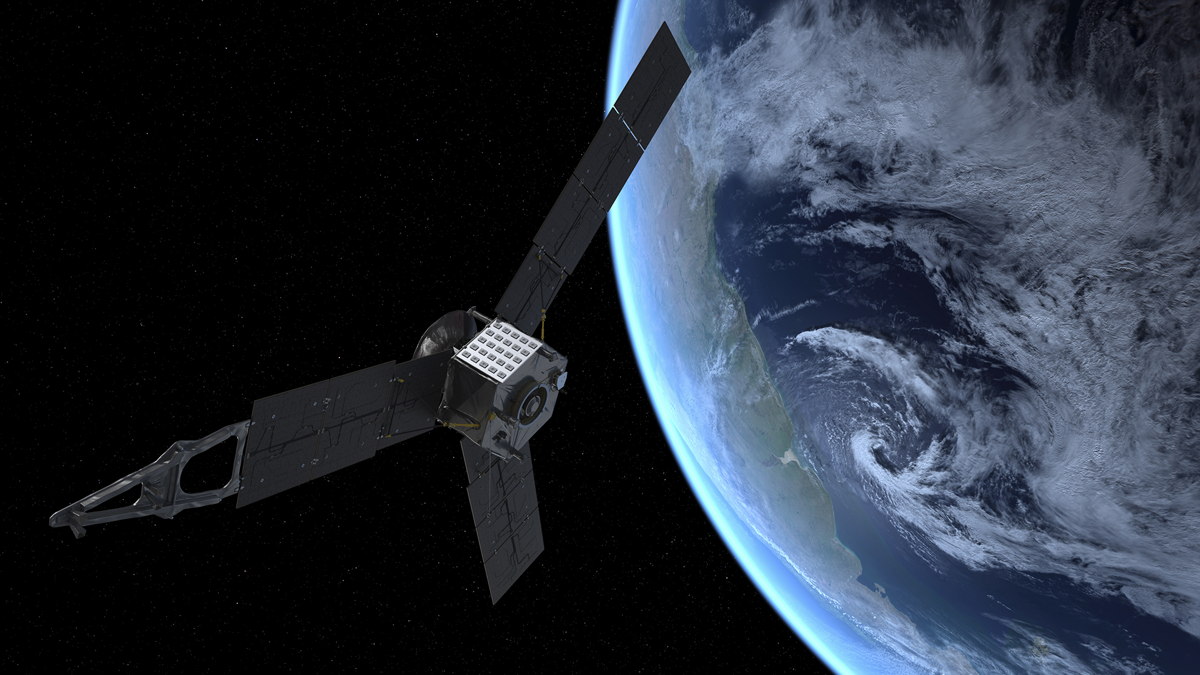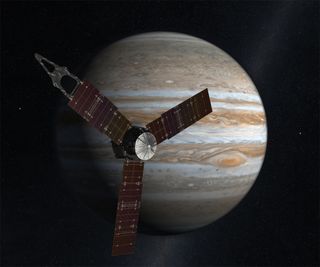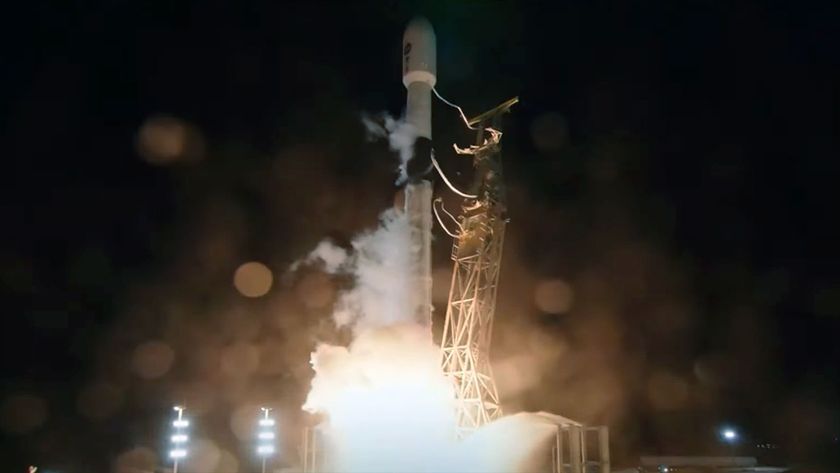NASA's Jupiter-Bound Juno Spacecraft Buzzes Earth Today: Watch It Live

Update: NASA's Juno spacecraft has succesfully zipped by Earth on its way to Jupiter. See our full story here: NASA Spacecraft Slingshots By Earth On Way to Jupiter, Snaps Photos
A NASA spacecraft will zoom by Earth today (Oct. 9) to use the planet's gravitational pull as a speed boost for its trip to Jupiter and you can see live views of the probe live online during the flyby.
NASA's Juno probe will be a mere 347 miles (558 kilometers) from Earth and over South Africa when it makes its closest approach at 3:21 p.m. EDT (1921 GMT). Later tonight, at 9:30 p.m. EDT (0130 GMT), the online Slooh Space Camera will track the Juno spacecraft's Earth flyby live in a free webcast.
You can watch the Juno flyby webcast live on SPACE.com, courtesy of Slooh. Viewers can also ask questions via Twitter using the hashtag #nasajuno. [See photos of NASA's Juno mission to Jupiter]
"Besides watching on Slooh, viewers near Cape Town, South Africa, will have the best opportunity to view the spacecraft traveling across the sky," Slooh officials said. "The spacecraft will most likely not be visible to the unaided eye, but binoculars or a small telescope with a wide field should provide an opportunity to view."
NASA launched the Juno in August 2011 on a mission to study Jupiter in unprecedented detail when it arrives at the gas giant planet on July 4, 2016. The $1.1 billion Juno mission to Jupiter will use nine instruments to probe deep inside Jupiter to reveal glimpses into the planet's origin, structure, atmosphere and magnetic field. It is named after Juno, the mythological wife of the god Jupiter who used special powers to learn the secrets Jupiter had hidden beneath cloud cover.
But first, the Juno spacecraft has to get to Jupiter. NASA used an unmanned Atlas 5 rocket to launch Juno in 2011, but the rocket was not powerful enough to send the spacecraft all the way to Jupiter. Instead, it sent Juno on a looping trajectory that carried it beyond the orbit of Mars and back so it could around Earth today in what scientists call a "gravity assist."
Get the Space.com Newsletter
Breaking space news, the latest updates on rocket launches, skywatching events and more!

Juno is currently streaking through the solar system at a speed of 78,000 mph (126,000 km/h), with respect to the sun. During the gravity-assist speed boost, Earth's gravity will cause Juno to accelerate by as it approaches the planet. Once Juno completes the flyby, it will be travelling at about 87,000 mph (140,000 km/h).
Juno mission principal investigator Scott Bolton, of the Southwest Research Institute in San Antonio, Texas, has likened the maneuver to a "second rocket launch."
While 97 percent of NASA is currently on furlough due to the ongoing government shutdown, the agency's Jet Propulsion Laboratory — which manages the Juno mission — remains on duty for now. During Juno's Earth flyby, the spacecraft is expected to test its science instruments and snap photos of Earth and the moon.
"One of Juno's activities during the Earth flyby will be to make a movie of the Earth-moon system that will be the first to show Earth spinning on its axis from a distance," Bolton said in a statement.
The probe will also flex its scientific muscle in other ways.
"We'll exercise the science instruments, since Juno’s instruments will be operating in a magnetospheric environment for the first time," said spacecraft engineer Jeff Lewis, Juno operations lead for spacecraft builder Lockheed Martin Space Systems. "The Earth’s magnetic field will allow a number of the instruments to be tested. We're also using the flyby of the moon as an opportunity to gauge how the spacecraft operates. Since Juno is a spinning spacecraft, we need to sense the right time to take data as the moon, or Jupiter, passes through the instruments' fields of view."
But the star of today's Earth flyby is the gravity assist maneuver itself, scientists said.
"Juno will be really smoking as it passes Earth at a speed of about 25 miles per second relative to the sun. But it will need every bit of this speed to get to Jupiter for its July 4, 2016 capture into polar orbit about Jupiter," said research scientist Bill Kurth of the University of Iowa, who is the lead investigator for two of Juno's instruments. "The first half of its journey has been simply to set up this gravity assist with Earth."
Today's Slooh webcast of the Juno flyby of Earth can be tracked directly from the Slooh Space Camera website (http://www.slooh.com) and via the Slooh iPad app.
Email Tariq Malik at tmalik@space.com or follow him @tariqjmalik and Google+. Follow us @Spacedotcom, Facebook and Google+. Original article on SPACE.com.
Join our Space Forums to keep talking space on the latest missions, night sky and more! And if you have a news tip, correction or comment, let us know at: community@space.com.

Tariq is the Editor-in-Chief of Space.com and joined the team in 2001, first as an intern and staff writer, and later as an editor. He covers human spaceflight, exploration and space science, as well as skywatching and entertainment. He became Space.com's Managing Editor in 2009 and Editor-in-Chief in 2019. Before joining Space.com, Tariq was a staff reporter for The Los Angeles Times covering education and city beats in La Habra, Fullerton and Huntington Beach. In October 2022, Tariq received the Harry Kolcum Award for excellence in space reporting from the National Space Club Florida Committee. He is also an Eagle Scout (yes, he has the Space Exploration merit badge) and went to Space Camp four times as a kid and a fifth time as an adult. He has journalism degrees from the University of Southern California and New York University. You can find Tariq at Space.com and as the co-host to the This Week In Space podcast with space historian Rod Pyle on the TWiT network. To see his latest project, you can follow Tariq on Twitter @tariqjmalik.










